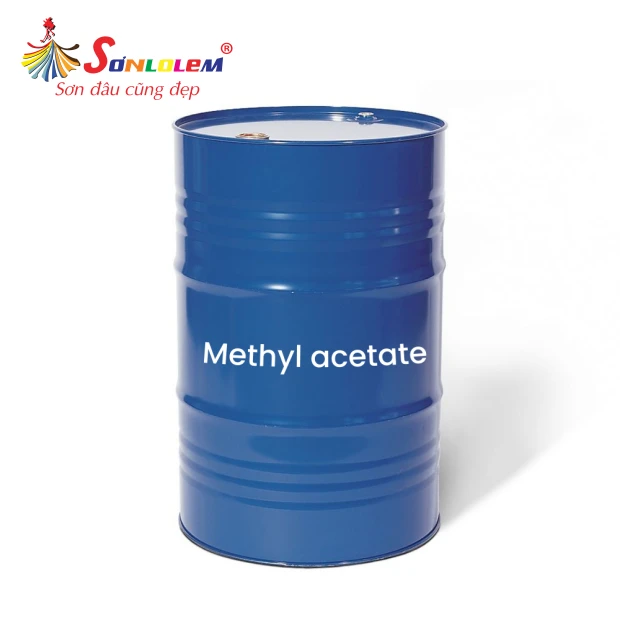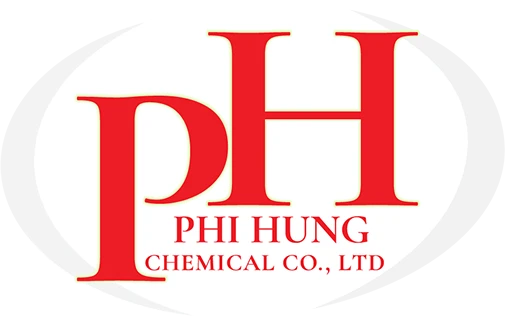

Methyl acetate
Methyl acetate
Solvent Name: Methyl Acetate (MAC)
CAS Number: 79-20-9
Chemical Formula: C₃H₆O₂
Net Weight: 190Kg/drum
Product information:
Methyl acetate is a transparent liquid obtained through the carbonylation of methanol solvent. It is widely used in industries such as paint production, paint removers, rubber, adhesives, and more. Let’s explore this organic solvent in detail.
1. What is Methyl Acetate?
Methyl acetate is an ester formed from the reaction of acetic acid and methanol, with the chemical formula CH₃COOCH₃. It is also known as methyl ester of acetic acid, methyl ethanoate, or MeOAc.
This colorless, transparent liquid has a fruity fragrance. It is commonly found in apples and various fruits like bananas and grapes. Methyl acetate is used in the food industry, leather production, paint removers, and plasticizers.
2. Properties of Methyl Acetate
2.1 Physical Properties
- Appearance: A colorless, transparent, volatile, and highly flammable liquid.
- Odor: Slightly sweet, resembling ripe fruit.
- Molecular Weight: 74.079 g/mol.
- Density: 0.932 g/cm³.
- Freezing Point: -98°C (-144°F; 175K).
- Boiling Point: 56.9°C (134.4°F; 330.0K).
- Solubility in Water: Approximately 25% at 20°C; increases with temperature.
- Miscibility: Can mix with most organic solvents such as alcohols and ethers.
- Vapor Pressure: 173 mmHg (20°C).
- Viscosity: 0.37 cP.
2.2 Chemical Properties
Methyl acetate exhibits typical ester reactions, including:
- Hydrolysis Reactions:
- In acidic conditions, it hydrolyzes into acetic acid and methanol (reversible reaction).
- In alkaline conditions, it reacts with NaOH to produce a carboxylate salt and methanol (saponification reaction).
- Reduction Reaction:
- When treated with LiAlH₄ at high temperatures, it reduces to ethanol and methanol.
- Combustion Reaction:
- CH₃COOCH₃ → 3CO₂ + 3H₂O
3. Industrial Production of Methyl Acetate
Methyl acetate is industrially produced via carbonylation of methanol. It is also a byproduct of acetic acid production. Another method involves esterification of acetic acid with methanol using strong acids like sulfuric acid as a catalyst. The Eastman Kodak process enhances efficiency through reactive distillation.
4. Key Applications of Methyl Acetate
In Paints, Adhesives, and Nail Polish Removers
Due to its fast evaporation, good solvency, and fruity smell, methyl acetate is widely used in:
- Paint and coating production.
- Adhesive manufacturing.
- Nail polish removers.
As a Chemical Intermediate
- It is a precursor for acetic anhydride production via carbonylation.
- Used in synthesizing various chemical compounds such as chlorophacinone, diphacinone, fenfluramine, methyl cinnamate, methyl cyanoacetate, methyldopa, and phenylacetone.
In Pharmaceuticals
Methyl acetate acts as a solvent for antibiotics and other pharmaceutical raw materials.
As a Fragrance Additive
It is commonly used to enhance scents in perfumes and flavoring agents.
Other Industrial Uses
- Solvent for pesticides and fungicides.
- Used in ink formulation and dye synthesis.
- Component in cement and adhesives.
5. Safety and Storage Guidelines
5.1 Toxicity and Hazards
- Rated level 2 by NFPA for health hazards.
- Ingestion or inhalation can cause headaches, drowsiness, and fatigue.
- Prolonged exposure may lead to central nervous system depression.
- Eye, skin, and respiratory contact can cause irritation.
- Highly flammable with a flash point of -10°C, producing toxic fumes when burned.
5.2 Storage and Transportation Precautions
- Store in designated flammable liquid storage areas in sealed stainless steel, aluminum, or carbon steel containers.
- Keep in dry, well-ventilated storage areas away from heat, sunlight, and oxidizers.
- Classified as a Class 2 Flammable Liquid and should be transported accordingly.
5.3 Safe Handling Procedures
- Always wear protective gear when handling.
- Skin contact: Rinse immediately with water and seek medical attention.
- Eye contact: Rinse thoroughly with water and seek medical help.
- Inhalation or ingestion: Seek emergency medical care immediately.
- Ensure airtight sealing of containers after use.
- In case of spills, evacuate at least 50 meters from the leak.
- Fire response:
- Water-based extinguishers may be ineffective due to the low flash point.
- Use alcohol-resistant foam extinguishers for large fires.
- Workers should be trained in fire safety measures and emergency response.
Methyl acetate plays a crucial role in various industrial applications, but proper handling and safety measures are essential to ensure safe usage and storage.


 Tiếng Việt
Tiếng Việt